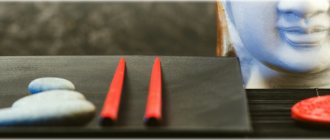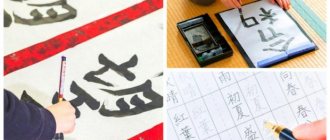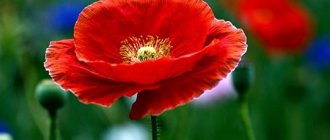Hi all. In this article we will talk about Feng Shui talismans. We will look at the most powerful in influencing and attracting wealth, love, luck and health.
Chinese Feng Shui talismans for the home have special energy, especially if they are in the right place and complement the interior. All these items are based on a legend. See what you can buy to attract good luck, health, wealth and love.
Wealth
Money talismans are the most common in Feng Shui. Material well-being is the most important part of life. Having a means of subsistence makes a person feel more confident and happier. It is not surprising that amulets to attract money are the first to be sold out.
Which wealth talismans are considered the most powerful:
Money tree or Crassula
This plant has round, fleshy leaves that resemble coins. It is customary to place a bill or coin under a pot of fatty grass so that the money “grows.”
Three-toed toad
A talisman with an interesting legend. In ancient China, they believed that there once lived an evil robber who robbed indiscriminately and even attacked the lower gods. They turned to Buddha for help, and he turned the robber into a toad, depriving him of one paw. Since then, the three-fingered talisman has been paying for its stinginess and rewarding its owner with money.
There is a sign: if a coin falls out of a toad’s mouth, then expect an increase.
Place the money frog near a window or in the southeast, no higher than table level - these animals are afraid of heights.
Goldfish
As in the famous fairy tale, wishes come true, especially in quantities of three or nine. Carps are powerful money magnets. Let one of the nine carps be black to protect against the evil eye.
A ship sailing inside a house
This could be a painting or a figurine of a sailboat. Material wealth arrives on the ship. Such an amulet is placed near a window or front door and filled with coins and jewelry.
Hottei
Laughing god of prosperity and fun. It’s good when the figure is holding a bag of money or a fish in his hands.
Purple colors
Violet shades are used in the interior of the southeastern zone of Wealth. For women, violets with purple flowers are considered especially successful. And in the office it is customary to keep a small purple object - for the favor of the authorities and salary growth.
Where to place it in the house
Place money talismans in the southeast sector of the house. This is the Wealth Zone.
Flowing water helps to strengthen this zone - aquariums, fountains, paintings with the water element. It’s great when in the southeast of the house there is an aquarium with nine fish, one of which is black.
On the office desktop, the money talisman is placed in the far left corner.
Element Metal – placement by zones
Metal feng shui symbols have their own purpose. It lies in the direct activation of the energy flows of the home environment. In addition, such talismans retain good energy inside the room, and, on the contrary, push bad energy outside. These kind of “cleaners” are necessary for every home. They can be placed anywhere in the apartment.
Metal makes positive energy fill all corners. She is in constant motion. In order to have such a microclimate all the time, regularly rearrange your metal talismans: pick them up, turn them, move them.
Double luck sign - “lucky” feng shui symbol
Perhaps you have set a big goal for yourself: building a house, buying a new car, studying a child abroad. In such cases, the help of the Universe is constantly needed. You need a strong shoulder nearby that will fend off failures and blows of fate. Try using the double luck sign.
Correct use of this symbol will turn your life in a happy and successful direction. The so-called “white streak” will come. Day after day you will be filled with more and more confidence in the success of your actions.
First, let's look at the amulet, which is called the “mystical knot”. When buying a talisman, pay attention to the color - it is better to choose red. The optimal option for placing it can be the following zones: Fame, Wealth, Love.
The next sign is the “double sign of luck.” It looks like a pair of hieroglyphs.
The convenience of this talisman is that it takes up very little space, so you can always carry it with you. For example, a wallet or document will do.
The most favorable colors are light tones combined with dark ones. For example, white and black. Or red and white.
Happiness lies in simplicity and ease!
Love
Talismans of love are often paired. They symbolize the harmony of two people. Couple amulets work both to attract love and to preserve it in marriage.
- Two swans. This talisman means love and loyalty for life. A pair of mandarin ducks and dolphins have a similar effect.
- Red Chinese lanterns. If you hang a couple above the front door, then love will soon stop by for a visit.
- A pair or a flock of butterflies - to create a romantic atmosphere.
- Live or painted red peonies are a powerful magnet of love and passion. A single woman should place the flower in the bedroom, and when a partner arrives, move them to the living room.
- A pair of candles in candlesticks: one red, the other white.
All feng shui symbols can be used not only in the apartment and office, but also for wish cards.
Wood element symbols
The zones of the Tree are the east and southeast of the home, the color is green. The plant activates creativity, general development, and the desire for growth. It is a symbol of creativity, caring, family, flexibility and the ability to compromise.
The element is personified by flowers and plants, live or artificial, which must be made from natural materials and always from natural wood. You can use images and photographs. Wooden or wicker furniture, bamboo or reed mats are also suitable.
Paintings
Pictures depicting sprouts reaching towards the sun or flowering plants contribute to the search for a new job. To do this, such an image needs to be hung in the work and career sector. Also, such paintings, hung near a tap or in a place where pipelines and sewers are laid, prevent money from leaking out of the house.
In order not to disturb the balance of Yin and Yang energies in the house, you should not store dried flowers or paintings with them in it. A panel made of straw, on the contrary, promotes the accumulation of positive energy.
Flowers
Indoor plants have a beneficial effect in any sector of the home. It is important to use them in moderation. Thus, flowering plants in the family area will help create harmonious relationships with your other half, avoid quarrels, and improve mutual understanding.
Plants in the family zone help improve sex life and increase the chances of having offspring. Flowers in the fame zone help strengthen social standing, win the respect of friends and business partners, and in the health zone - improve overall well-being and the atmosphere inside the home.
Luck
Feng Shui talismans can perform several functions at once.
Wall fan
A large wall fan with floral patterns not only attracts good luck into the home, but also dispels negative energy and protects the owner from damage.
Green Dragon
The Green Dragon is a multifunctional amulet. This animal is located in the eastern part of the house. He patronizes the head of the family, attracts good luck in all matters, material wealth and wisdom.
Elephant
A popular talisman of good luck is a figurine of an elephant with its trunk raised up. Place the elephant facing the window so that it attracts success and various benefits.
According to the Chinese calendar, 2020 is under the sign of the Metal Rat. Amulets with this animal or even a live pet will definitely tilt fate in your favor.
Listen to your feelings: if the talisman causes anxiety, does not work, or even harms, it is better to get rid of it.
From China to Japan: Japanese minimalism
This interior style originated in the Land of the Rising Sun more for practical reasons. Due to constant earthquakes, people in ancient Japan preferred to build houses from paper and bamboo; filling them with massive furniture, chandeliers and candelabra simply did not make sense.
Japanese minimalism in the interior of an apartment is space, natural tones, natural materials and simple geometry.
It is not easy to thoroughly reproduce this archaic style on the basis of Russian real estate, but you can take into account its individual elements, Eastern wisdom and asceticism.
Bedroom design 2021: anti-stress trends
Fashionable shades promote tranquility, soft headboards invite you to spend the day comfortably in bed, light wood and wicker warm the interior, and designers offer cozy “granny chic” as an alternative to strict minimalism.
Everything about bedroom design 2021. To bring Japanese minimalism into your apartment, you should opt for natural colors and low furniture, use screens for zoning and choose closed storage systems - the fewer items in sight, the better. Add to this stylizing decorative elements and you’re done – konichiwa, Japanese minimalism.
Japanese minimalism in the interior can easily make friends with Chinese Feng Shui. They agree with each other in the Eastern perception of comfort - this is space, orderliness and emptiness. Feng Shui and Japanese minimalism do not tolerate unnecessary trash and useless dust collectors, so why should chi energy bump into any obstacles?
Health
To attract health, Feng Shui experts recommend growing living plants.
The center of the house is the Health sector, which unites the other eight zones into the Bagua scheme. The center is considered the most important point of the apartment, because health is the basis of a person’s quality life.
Place a pot with a large flower, such as a ficus, in this sector, and do not forget to constantly care for it.
A few more talismans for health:
Lotus flowers
Symbolize wisdom and mental health. They are also placed in the center of the house.
Fountains
They personify not only the influx of finances, but also inexhaustible energy. With such a talisman, a person will not experience a breakdown. The water in the fountain should always be clean.
Phoenix
Attracts phoenix health energy. The bird not only gives strength, it protects against failures and helps to overcome obstacles. As a symbol of fire, the phoenix is located in the southern part of the apartment, in the Glory sector.
Turtle
A popular symbol of longevity. With such a talisman, a person will be under reliable protection, like under a shell. There are three turtles in one figurine. They are designed for multi-generational families.
Pumpkin
This amulet helps to recover from a protracted illness. The pumpkin is hung over the patient’s bed, and after recovery, it is thoroughly washed with water to remove negative energy.
Peach
Symbol of eternity, health, prosperity. It is useful to keep a picture of a tree or fresh fruit in the house.
What are the symbols of the element of Water?
Water is the primary element, the conductor of Qi energy. It symbolizes wealth, wisdom, intuition. Water heals the body and restores strength. Element colors: black, dark blue, purple, aquamarine.
Symbols representing the element of Water: mirrors, glassware, aquariums, fountains and other structures with clean flowing water. You can use images or photographs of natural bodies of water and natural landscapes. This could be a waterfall, seascape, fish and other sea animals. Winter landscapes are also suitable.
And then to Scandinavia: japanordic
If we add Scandinavia into the equation, we get the japanordic style. Japanordic in the interior is a hot trend that has not yet gone among the people, but is already stirring the minds of the design community. However, there are skeptics among designers who call japanordic an invention of marketers who want to serve us the old Scandinavian interior with a new oriental sauce.
Such a tandem seems strange only at first glance. It’s worth taking a closer look, and the nature of the geographical collaboration is clear - both Asia and Scandinavia gravitate towards interior minimalism, simplicity and functionality.
Unlike the good old Scandinavian, japanordic prefers unique items and handmade goods to the mass market. Otherwise, japanordic in the interior is the same light walls, minimum color, maximum naturalness and functionality. Only with an Asian accent.
This approach is completely in tune with Feng Shui: light, spacious, everything is in its place, each functional area is thought out to the smallest detail and there is no ostentatious luxury.
Back to Japan: Wabi-Sabi
Another trendy phenomenon in the interior is the wabi-sabi style (literally “modest beauty”). This is not just an Asian style stylization. Just as a dumpling spread with wasabi will not be Japanese cuisine, Japanese tatami on the floor will not make the interior wabi-sabi. The roots of this phenomenon in the interior are deeper and are nourished by Eastern philosophy.
Scandinavian style kitchen design
Scandinavian design is the embodiment of simplicity, conciseness, convenience and practicality.
We'll show you how to bring a little Scandinavian freshness to your kitchen. Wabi-sabi in the interior of an apartment, in contrast to modern Japanese minimalism, gravitates towards antiquity. This style is characterized by the deliberate aging of things. Wabi-sabi does not hide flaws, like the japanordic, he loves exclusive things, but he will always prefer the old and with soul to the new and dear. This style teaches you to see beauty in the imperfection and uniqueness of objects.
The wabi-sabi style in the interior proclaims simplicity and functionality and calls for displaying only decorative elements that are special to you. Here you can feel the kinship with talismanic objects from Feng Shui. And in general, on the basis of practical and minimalistic wabi-sabi, the principles of Feng Shui are easy to implement.
What is Feng Shui?
Taoism is a philosophical doctrine that originated in China in the 4th century. BC. Tao translates as “way” or “road” and describes a free lifestyle in harmony with nature.
Feng Shui is a teaching related to Taoism. Both of these movements imply a core belief that everything is interconnected.
The ancient Taoists, who developed the art of Feng Shui, decided to distinguish their own school as a result. They expanded the study to the formation of the environment and how it synchronizes with natural flows of energy (called “qi”). This article describes the basics of qi and explains how “good qi” can promote health and happiness.










